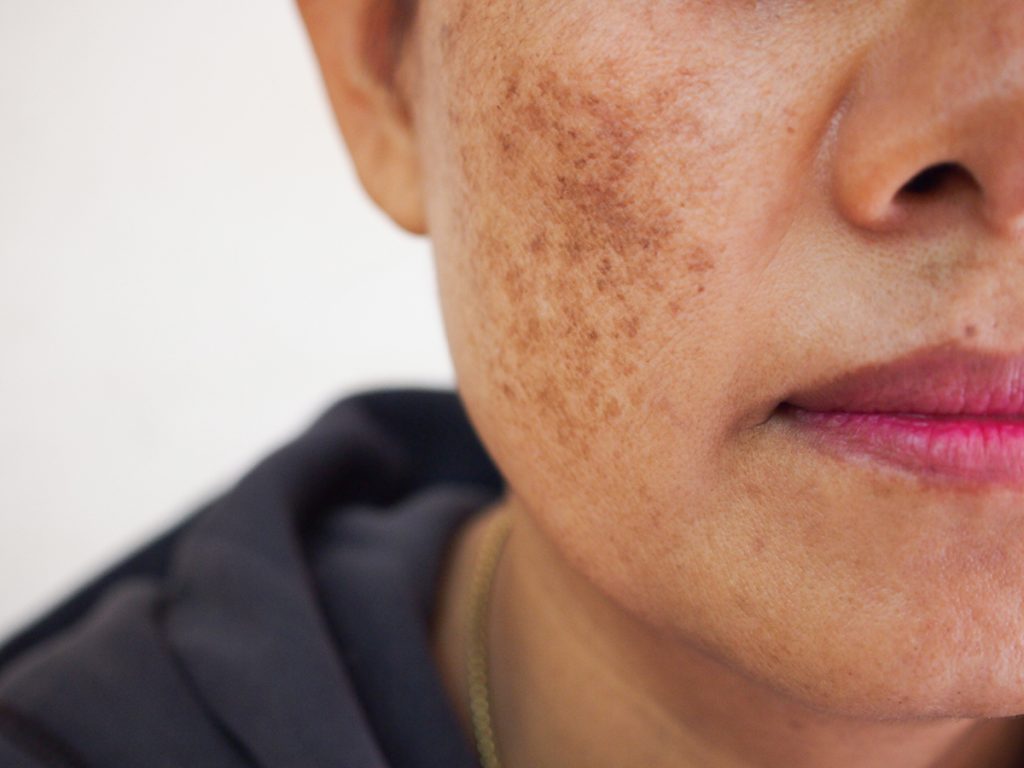Ever wondered why those pesky dark spots or uneven patches appear on your skin? Pigmentation happens when your skin produces too much melanin, the pigment responsible for your skin color. While melanin is essential for protecting your skin, an overproduction can leave behind unwanted marks. Let’s explore the main causes of pigmentation, how you can achieve a more even skin tone and how they can be treated.
What Causes Pigmentation?
1. Sun Exposure
UV rays are the number one culprit! Excessive sun exposure stimulates melanin production, leading to sunspots, freckles, or patches of discoloration.
2. Hormonal Changes
Hormonal shifts during pregnancy, menopause, or while using birth control can trigger melasma—a type of pigmentation that appears as dark, symmetrical patches on the face.
3. Post-Inflammatory Hyperpigmentation (PIH)
After acne, cuts, burns, or even some skin treatments, the healing process can leave behind dark marks where the skin has produced extra melanin.
4. Aging
As we age, our skin’s ability to distribute melanin evenly decreases, leading to age spots or uneven pigmentation.
5. Genetics
Sometimes, pigmentation issues are inherited. If your parents had it, chances are you might, too.
6. Environmental Factors
Pollution, toxins, and free radicals can stress your skin and worsen pigmentation.
How to Manage and Treat Pigmentation
1. Protect Your Skin
Sunscreen is your best defense! Use a broad-spectrum SPF 30 or higher daily to prevent pigmentation from worsening.
2. Brightening Skincare
Look for products with ingredients like vitamin C, niacinamide, or arbutin, which can lighten dark spots and even out skin tone.
3. Exfoliation
Gently exfoliating with AHAs or BHAs can help fade pigmentation by removing dead skin cells and encouraging cell turnover.
4. Professional Treatments
At our clinic, we offer tailored solutions for pigmentation, such as:
– Chemical Peels: To resurface and brighten skin.
– Microneedling: To reduce post-inflammatory hyperpigmentation.
– Laser Treatments: Target melanin at its source for a more even complexion.
5. Lifestyle Adjustments
Stay hydrated, maintain a healthy diet rich in antioxidants, and avoid prolonged sun exposure to support your skin’s natural healing.
Types of Pigmentary Lesions and Their Causes
Sunspots (Solar Lentigines)
- Cause: Long-term sun exposure stimulates excess melanin production.
- Appearance: Small, flat, brown spots often found on sun-exposed areas like the face, hands, and shoulders.
Melasma
- Cause: Triggered by hormonal changes (e.g., pregnancy, birth control, menopause) combined with sun exposure.
- Appearance: Symmetrical, patchy pigmentation often on the cheeks, forehead, and upper lip.
Post-Inflammatory Hyperpigmentation (PIH)
- Cause: Skin injury or inflammation, such as acne, cuts, burns, or even skin treatments.
- Appearance: Dark spots left behind after the skin heals.
Freckles (Ephelides)
- Cause: Genetic predisposition, usually triggered by sun exposure.
- Appearance: Small, light brown spots often seen in lighter skin tones.
Age Spots
- Cause: Natural aging and cumulative sun exposure over the years.
- Appearance: Larger brown spots, often appearing on the hands, face, and décolleté.
Understanding Melasma: A Complex Challenge
Melasma is one of the most challenging forms of pigmentation to treat. It’s essential to understand that in some cases, melasma cannot be completely removed, but combination treatments can achieve very good results, significantly reducing its appearance.
However, melasma has a tendency to return if sun protection and other influencing factors are not properly managed. This is why wearing broad-spectrum sunscreen daily and avoiding direct sunlight is non-negotiable.
At our clinic, we emphasize examining how many layers of the skin the melasma affects:
- Superficial Layers (Epidermal Melasma): Easier to treat, often responding well to topical treatments and chemical peels.
- Deeper Layers (Dermal Melasma): More challenging to address but can still achieve significant improvement with advanced treatments like microneedling, lasers, or a combination of approaches.
When you visit us, we carefully review all the influencing factors, such as hormones, lifestyle, and skin condition, to create a personalized treatment plan tailored to your needs.
How We Treat Pigmentation at Our Clinic
Our clinic offers a range of professional solutions to target pigmentation effectively:
- Skin Analysis: A thorough assessment to identify the type and depth of pigmentation.
- Custom Treatment Plans: Tailored solutions using a combination of treatments such as:
- Chemical Peels: To remove damaged surface layers and brighten the skin.
- Microneedling: To stimulate repair and reduce hyperpigmentation.
- Laser Treatments: Advanced technology to target melanin and even out the skin tone.
- Lifestyle and Maintenance Advice: Sun protection, skincare routines, and dietary adjustments to support long-term results.
Glow with Confidence
Pigmentation doesn’t have to dim your radiance. Whether you’re dealing with sunspots, melasma, or post-inflammatory hyperpigmentation, our clinic provides comprehensive care to restore your skin’s natural beauty. Book a consultation today, and let’s create a plan to achieve clear, even-toned skin that you’ll love!

